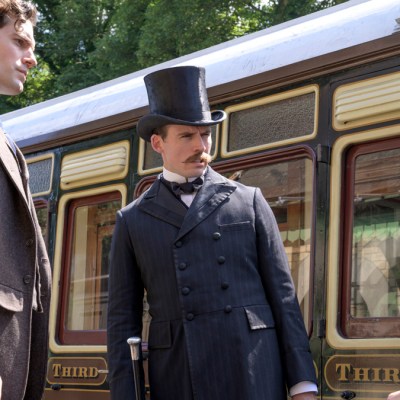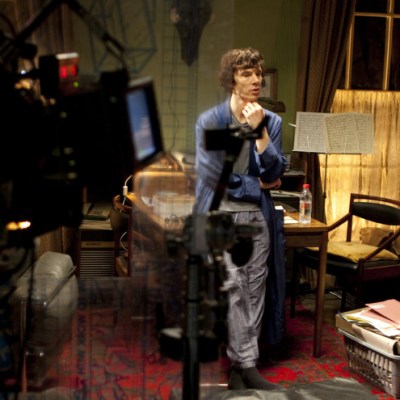The titular “Irregulars” who star in the new eight-part Netflix series are total badasses, but outside of their shared team name, they are significantly different from the Baker Street Irregulars who originated in the pages of the Sherlock Holmes canon as written by Sir Arthur Conan Doyle. This isn’t to say that The Irregulars defies the Holmes canon per se, but it does weave an alternate dimension of the 221B universe, one populated by a lot of elements we never saw in the classic Watson-narrated stories. In Doyle’s ‘The Adventure of the Sussex Vampire’ Sherlock debunks the existence of an undead bloodsucker, famously saying “Ghosts need not apply!” But in The Irregulars, ghosts and demons are everywhere, complete with a secret society of paranormal disciples (based on the real-world 19th century Order of the Golden Dawn).
This is a long-winded way of saying, the points of departure between The Irregulars and the canon of Doyle’s Holmes are numerous. Unlike Enola Holmes — in which you could squint and imagine those adventures lining up with the Doyle canon — The Irregulars is straight-up fanfic. That said, the inspirations for Bea, Jessie, Billy, Spike, and Leopold are found in a handful of legit old-school Sherlock Holmes stories. Here’s how the Netflix series comes from the canon of Sir Arthur Conan Doyle, and how it plays with that canon, too.
The Origin of the Baker Street Irregulars
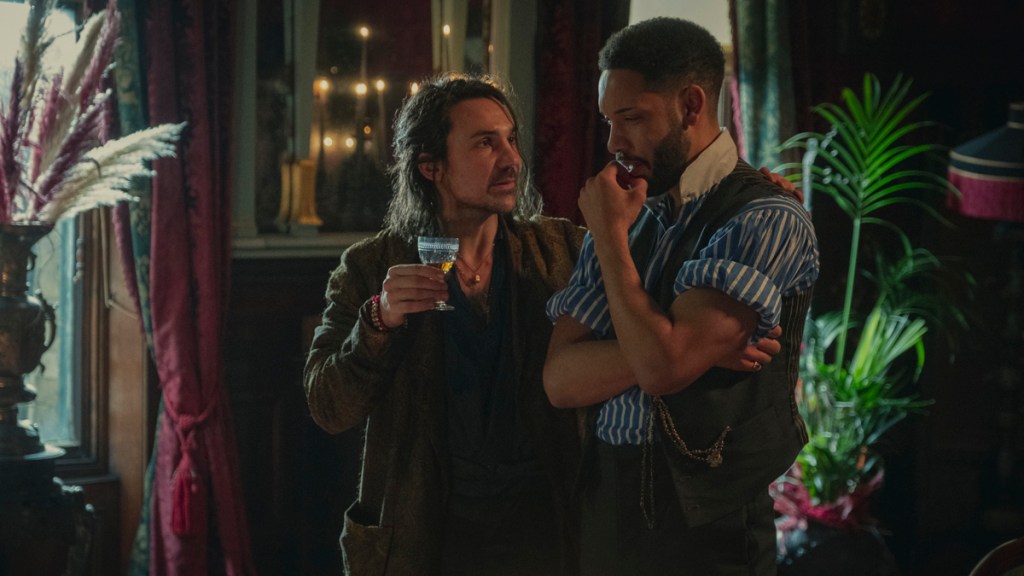
In the first two Sherlock Holmes novels (there are only four total) — A Study in Scarlet and The Sign of the Four — we’re introduced to some Dickensian street orphans whom Holmes calls “the Baker Street division of the detective police force.” Remember the Artful Dodger from Oliver Twist? That’s pretty much the Baker Street Irregulars; streetwise urchins who act as the “eyes and ears” of Sherlock Holmes in terms of what’s really going on out there in the world. This trope pops up in a lot of other fiction too, but it’s notable to mention that despite the famous name “Baker Street Irregulars,” this unofficial gang of children doesn’t appear in very many canonical Holmes stories, and we certainly don’t know many of their names.
The term “Baker Street Irregulars” comes from the title of Chapter 8 in The Sign of the Four. In that novel, Holmes enlists the Irregulars in tracking the progress of a boat on the River Thames. One of the Irregulars is named “Wiggins,” who is their leader. Notably, in stories set eight years apart (A Study in Scarlet and The Sign of the Four) Wiggins is still the primary Irregular that Holmes deals with. This detail is just one of countless examples in the Doyle canon in which things just do not add up; such as the shifting location of Watson’s infamous war wound. In-universe fans (Watsonians) attribute these mistakes to a greater truth lurking below the surface of the stories; one that suggests that Watson actually repressed a lot of information in the telling of these tales. After all, Wiggins can’t be a young child for eight years! Then again, in The Irregulars, all the “kids” are much older than the ones who are described in the canon. We’re mostly dealing with teenagers now! So, the “ageless” Wiggins from the canon, is sort of a model for our contemporary irregulars in the Netflix show.
Read more
Outside of those two Holmes novels, the only other story in which the Baker Street Irregulars are mentioned outright is in ‘The Adventure of the Crooked Man’ in which there’s a reference to one of the “Baker Street Boys,” and specifically a kid named Simpson. In ‘The Disappearance of Lady Frances Carfax’, there’s also a reference to Holmes’ “agency,” which, in some books — like The Sherlock Holmes Companion (Bramhall House, 1962) — is close enough to count. In The Hound of the Baskervilles, Holmes has “Cartwright,” who is disguised as a country boy, and in ‘The Adventure of the Mazarin Stone,’ Holmes is assisted by a pageboy named Billy – the same name as Jojo Macari’s character in The Irregulars. So, if you count all of that, there are three novels, and three short stories that reference the gang; a total of six references. That’s not a lot! There are 56 Holmes short stories and four novels. Six references is nothing.
Then again, the evil Professor Moriarty is mentioned or appears in only three stories and novels (‘The Final Problem,’ ‘The Empty House,’ and The Valley of Fear) and you’ve totally heard of him, right?
The Irregulars in The Irregulars
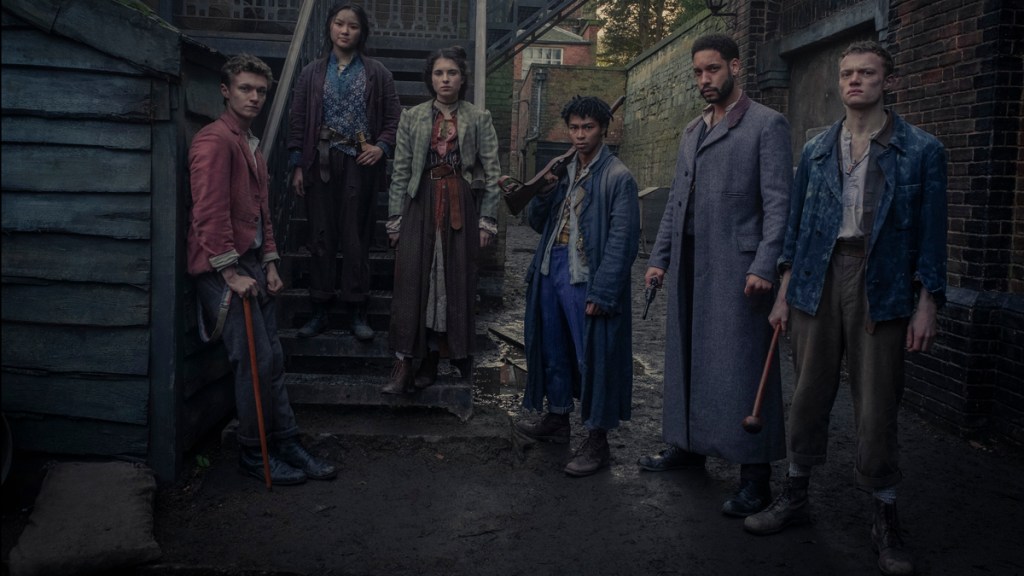
In the new Netflix show, the various Irregulars are employed by a slightly underhanded version of Dr. Watson. Because Holmes already uses another version of the Irregulars in A Study in Scarlet, you could imagine that this incarnation of the Irregulars could exist after that. Indeed, you could also imagine that everything in The Irregulars takes place at some point after ‘The Empty House,’ if you wanted to. Without giving away spoilers, the show presents a very different version of Sherlock Holmes who at one point says that he’s not really the man he used to be.
The larger point is, none of the new Irregulars have direct analogs with the canon, and that’s okay. The show is clearly about these new characters and not really about Holmes at all. In this way, the Irregulars in the series are kind of like the Teen Titans and young leads Bea (Thaddea Graham) or Jessie (Darci Shaw) is like Robin, while Holmes is obviously a washed-up Batman. Who Watson is in this analogy isn’t clear, but you get it.
The Legacy of the Baker Street Irregulars
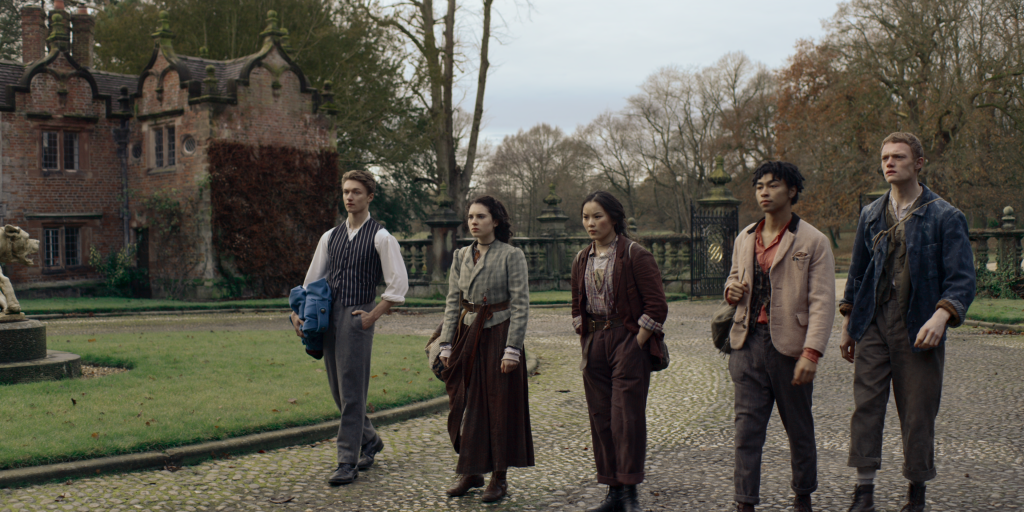
Although the name is famous, The Irregulars presents the first time a ton of focus has been paid to this aspect of the Holmes canon. In the Benedict Cumberbatch-led Sherlock, the Irregulars became a network of homeless people that worked for Holmes. In the comedy film Without a Clue, Ben Kingsley’s Watson employed the Irregulars, but nothing like the way Royce Pierreson’s Dr Watson does in the new show.
Perhaps the most famous example of the group is actually the group of adults who call themselves “Baker Street Irregulars.” In 1934, founded by Christopher Morely in New York, a huge literary club devoted to Sherlock Holmes dubbed itself “The Baker Street Irregulars.” Many famous authors have been members over the years including Nicholas Meyer, Isaac Asimov, and noted contemporary novelist, Lyndsay Faye.
Author (and NBA star) Kareem Abdul-Jabbar is also a member of the Baker Street Irregulars and has written excellent novels (and graphic novels!) about Mycroft Holmes. In 2017 Abdul-Jabbar revealed his own BSI even helped him win basketball games back in the day. “I even had my own Baker Street Irregulars,” he said in 2017. “I started paying special attention to the conversations among the ball boys and other staffers. When I overheard a couple ball boys joking about how Bob Lanier and his coach would smoke in the locker room at halftime, I decided to run Bob up and down the court as fast as I could in the second half.”
So there you have it. From one of the oldest fandom organizations on the planet to the eyes and ears of Kareem Abdul-Jabbar, the moniker “Irregulars” has a lot to live up to. Luckily, this new squad YA heroes is totally up to it.
The Irregulars is streaming now on Netflix.

